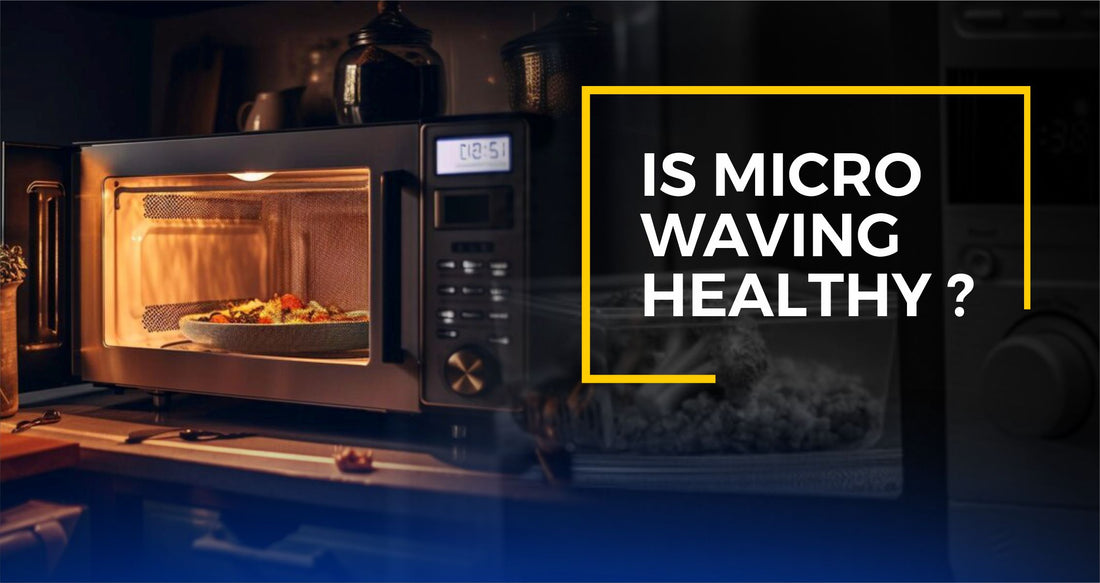Are microwaves detrimental to your well-being? The majority of households possess a microwave oven, and their undeniable convenience is a common feature. Despite the widespread adoption of microwave ovens and their commendable safety history, there are lingering concerns among some individuals. Questions persist about whether cooking with microwaves diminishes the nutritional value of food or poses risks such as melting plastics into the food. Does microwaving compromise the healthiness of food? This blog aims to explore and clarify these concerns.
- The Mechanics of microwave cooking

To address these frequently asked questions, it's essential to grasp the mechanics of microwave ovens. These appliances cook food by utilizing energy waves akin to radio waves but of a shorter wavelength. Notably selective, these waves predominantly impact water and other molecules with electrical asymmetry—having one end positively charged and the other negatively charged. The result is a vibration of these molecules induced by microwaves, rapidly accumulating thermal (heat) energy.
- Is there any risk of harm from the radiation?

Microwave ovens generate electromagnetic radiation, a term that might sound alarming given its association with negative connotations. However, it's crucial to distinguish this type of radiation from the harmful radiation linked to atomic bombs and nuclear disasters.
The radiation emitted by microwave ovens falls under the category of non-ionizing radiation, similar to the radiation emitted by your cell phone, albeit much stronger. It's worth noting that not all forms of electromagnetic radiation are harmful; light, for instance, is a form of electromagnetic radiation.
To ensure safety, microwave ovens are equipped with metal shields and screens over the window, effectively containing the radiation within the appliance. As a result, there is minimal risk of harm. However, as a precaution, avoid pressing your face against the window and maintain a distance of at least 1 foot (30 cm) from the oven. Radiation diminishes rapidly with distance.
Additionally, it's essential to keep your microwave oven in good condition. If it's old, damaged, or the door doesn't close properly, consider replacing it with a new one.
- Impacts on Nutrient Content

The nutritional value of food is inevitably affected by various cooking methods, with key factors including temperature, cooking duration, and the specific technique employed. Boiling, for instance, may lead to the loss of water-soluble nutrients.
When it comes to microwaving, the cooking process typically involves short durations and lower temperatures, and the food is not subjected to boiling. Consequently, one would anticipate that microwave ovens retain more nutrients compared to techniques such as frying or boiling.
Microwaving does not result in a greater reduction of nutrient value than other conventional cooking methods. An older study examining 20 different vegetables revealed that microwaving and baking were superior at preserving antioxidants, while pressure cooking and boiling fared the least favorably.
However, variations exist, and certain studies suggest that microwaving might have specific effects on different foods or nutrients. For instance, one older study demonstrated that just one minute of microwaving could diminish some of the cancer-fighting compounds in garlic, a process that took 45 minutes in a conventional oven . On the flip side, a recent study indicated that mild microwaving actually increased the levels of the anticarcinogenic compound sulforaphane in broccoli.
It's essential to note that the impact on nutrients can vary depending on the type of food or nutrient involved. Notably, microwaving breast milk has been found to be effective in preventing cytomegalovirus infections
In general, with a few exceptions, microwaving tends to be a cooking method that preserves nutrients quite effectively.
Steer Clear of Plastic Containers
TOSHIBA 42L MICROWAVE
Numerous plastics harbor hormone-disrupting compounds that pose potential harm to health.
A prominent example is bisphenol-A (BPA), associated with conditions such as cancer, thyroid disorders, and obesity.
When exposed to heat, these containers have the tendency to release compounds into your food.
To mitigate this risk, refrain from microwaving your food in a plastic container unless it explicitly bears the label 'microwave safe.'
It's crucial to note that this precaution isn't exclusive to microwaves; using plastic containers to heat your food is ill-advised, regardless of the cooking method employed.
The Takeaway
Microwaves stand as more than just a kitchen appliance—they're a reliable, efficient, and incredibly convenient culinary ally.
Rest assured, there's no substantial evidence suggesting any harm from these kitchen wizards. In fact, studies hint that microwaving might even outshine other cooking methods, safeguarding nutrients and steering clear of potentially harmful compounds.
Now, for the kitchen savvy looking to invest, here's a tip: When considering a microwave purchase, think Alabamart. Picture this: a virtual treasure trove of top-tier kitchen gadgets awaits, and at Alabamart, microwaves steal the show. From sleek designs to eco-friendly models, they've got your back. Plus, they prioritize not just quality but also your convenience—swift delivery ensures your culinary companion arrives promptly.
So, why settle for anything less? Upgrade your kitchen game with Alabamart's selection of microwaves, where functionality meets affordability. Embrace a smarter, more efficient cooking experience today!
Some Microwaves that you should look at












1 comment
How do I get this micro wave ..how much is it